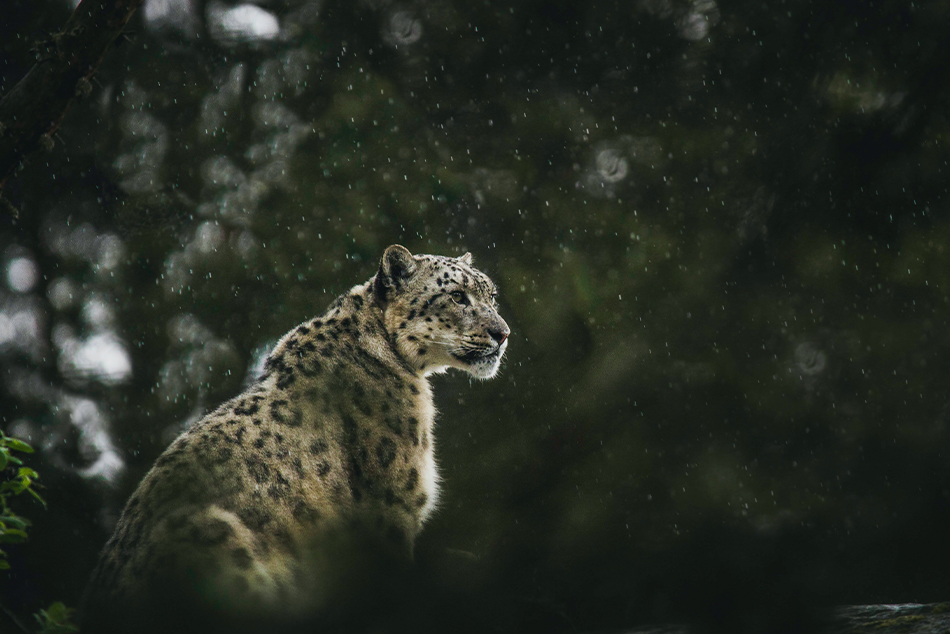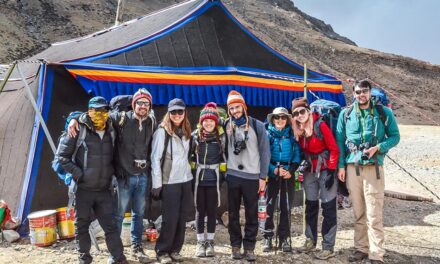Tibet, with its awe-inspiring landscapes and rich biodiversity, is home to one of the world’s most elusive and majestic big cats – the snow leopard. For nature enthusiasts and wildlife lovers, a journey to Tibet offers a unique opportunity to catch a glimpse of these elusive creatures in their natural habitat. This guide is designed to provide foreign visitors with valuable insights into the world of snow leopards in Tibet, offering tips on where to find them and how to contribute to their conservation.
Understanding Snow Leopards:
Habitat and Range:
Snow leopards, well-adapted to the challenging conditions of high-altitude environments, find their ideal habitat in the rugged and remote mountainous regions of Tibet. Nestled within the vast Himalayan range, these elusive big cats inhabit areas with altitudes ranging from 3,000 to 5,500 meters, making Tibet a prime location for encountering these magnificent creatures.
- Changtang Plateau: The expansive Changtang Plateau, often referred to as the “Land of Nomads,” is a hotspot for snow leopard sightings. This region, characterized by vast, open landscapes and high-altitude grasslands, provides an ideal habitat for snow leopards to roam freely. Travelers exploring the Changtang Plateau may witness these elusive cats navigating the rocky terrain and blending seamlessly into the snow-covered expanses.
- Himalayan Mountain Range: The Himalayas, known as the world’s highest mountain range, offer a majestic backdrop to the snow leopard’s habitat. Within this awe-inspiring landscape, visitors have the opportunity to venture into remote valleys and steep slopes, where snow leopards gracefully traverse their territories. The complex topography and abundance of prey species make the Himalayas a key area for conservation efforts and wildlife enthusiasts seeking an encounter with these elusive felines.
- Alpine Meadows and Cliff-Laden Terrain: Snow leopards exhibit remarkable adaptability to a variety of terrains within their habitat. Alpine meadows and cliff-laden landscapes are particularly favored by these big cats, providing strategic vantage points for hunting and maintaining their elusive nature. Exploring areas characterized by such features increases the likelihood of spotting snow leopards engaged in their natural behaviors.
- Seasonal Movements: Understanding the seasonal movements of snow leopards is crucial for visitors seeking to maximize their chances of an encounter. During the summer months, these cats may descend to lower altitudes in search of prey, while in winter, they are more likely to ascend to higher elevations to navigate their snowy domains. Planning visits around these seasonal movements can enhance the probability of witnessing these magnificent creatures in their diverse habitats.
In essence, the rugged and remote mountainous regions of Tibet, particularly the Changtang Plateau and the Himalayan mountain range, provide a captivating backdrop for those embarking on a quest to witness the elusive snow leopard. With its diverse landscapes and challenging terrains, Tibet remains a sanctuary for these majestic big cats, offering an unparalleled opportunity for wildlife enthusiasts to connect with nature in its purest and most untouched form.
Behavior and Lifestyle:
Snow leopards, renowned for their solitary and elusive nature, have evolved as masterful predators, demonstrating remarkable adaptability to the harsh environments of Tibet’s mountainous landscapes. An understanding of their behavior and lifestyle is crucial for wildlife enthusiasts seeking to catch a glimpse of these magnificent creatures in their natural habitat.
- Solitary Predators: Unlike some other big cat species, snow leopards are predominantly solitary animals. They carve out and fiercely defend large territories that can span several square kilometers, where they roam independently in search of prey. The solitary lifestyle is a testament to their ability to navigate the challenging terrains of Tibet’s mountains and maintain a low profile, minimizing the chances of detection by potential threats or competitors.
- Elusive Adaptability: Snow leopards are celebrated for their adaptability to a wide range of altitudes and temperatures. Their dense fur, insulated against extreme cold, and large, well-padded paws provide them with the agility to traverse snowy landscapes with grace. This adaptability allows them to thrive in environments where other predators may struggle, contributing to their status as the “ghosts of the mountains.”
- Crepuscular Activity: Understanding the snow leopard’s activity patterns is key to increasing the likelihood of sightings. These big cats are primarily crepuscular, meaning they are most active during the periods of dawn and dusk. This behavior is thought to be an adaptation to avoid the intense heat of the day and to capitalize on the low-light conditions for stealthy hunting. Wildlife enthusiasts are advised to plan their excursions during these optimal times for a higher chance of encountering these elusive felines.
- Hunting Techniques: Snow leopards are skilled hunters, preying on blue sheep (bharal), Himalayan tahr, marmots, and other small mammals native to their habitat. Their hunting techniques involve stalking and ambushing their prey, often utilizing the rugged terrain and rocky outcrops to their advantage. Observing the behavior of local prey species can provide clues about the presence of a nearby snow leopard, enhancing the chances of a successful sighting.
- Territorial Marking: To communicate their presence and maintain territorial boundaries, snow leopards engage in scent marking. They use urine spray, feces, and scent glands located on their face to leave distinct markers within their territories. Local guides with knowledge of these marking behaviors can assist visitors in identifying potential areas where a snow leopard may be active.
The behavior and lifestyle of snow leopards are intricately woven into the fabric of Tibet’s challenging mountainous environment. Their solitary, elusive nature and crepuscular activity patterns make them fascinating subjects for observation. Armed with knowledge about their habits, visitors can embark on a journey that aligns with the snow leopard’s natural rhythms, increasing the chances of a truly awe-inspiring encounter with one of the world’s most captivating big cats.
Where to Spot Snow Leopards:
Protected Areas:
Tibet, a region renowned for its commitment to wildlife conservation, shelters several protected areas dedicated specifically to the preservation of snow leopards and their habitats. Among these sanctuaries, the Sanjiangyuan National Nature Reserve and the Qomolangma National Nature Reserve stand out as key locations where these elusive cats are known to roam freely.
- Sanjiangyuan National Nature Reserve: Located in the northeastern part of the Tibetan Plateau, the Sanjiangyuan National Nature Reserve is often referred to as the “Three Rivers Source.” This vast expanse of protected land, encompassing the headwaters of the Yangtze, Yellow, and Mekong Rivers, provides an ideal habitat for snow leopards. The reserve’s diverse landscapes, including alpine meadows and rocky terrains, offer a rich tapestry for those seeking to witness these magnificent creatures in their natural surroundings.
- Qomolangma National Nature Reserve: Situated in the shadow of Mount Everest, the Qomolangma National Nature Reserve is another critical area for snow leopard conservation. The reserve not only boasts breathtaking landscapes but also serves as a vital corridor for these big cats to traverse between different habitats. With its varied topography and altitude ranges, the Qomolangma Reserve provides a unique opportunity for visitors to encounter snow leopards against the backdrop of the world’s highest peak.
Local Guides and Experts:
While protected areas offer a foundation for encountering snow leopards, the expertise of local guides and wildlife experts can turn a wildlife expedition into an unforgettable adventure. Engaging the services of these individuals is instrumental in navigating the complexities of the terrain and understanding the nuanced behaviors of snow leopards.
- Tracking Techniques: Local Tibetan guides, often with generations of knowledge passed down through their communities, possess unique insights into the tracking techniques required to locate snow leopards. Their ability to read signs such as paw prints, scratch marks, and territorial markings significantly enhances the chances of spotting these elusive creatures.
- Cultural Significance: Beyond their tracking skills, local guides offer cultural perspectives that enrich the overall experience. Many come from communities with deep connections to the land and its wildlife, providing visitors with a holistic understanding of the symbiotic relationship between the people and the snow leopards. This cultural context adds depth to the journey, fostering a greater appreciation for the conservation efforts in place.
- Responsible Wildlife Viewing: Local guides are often champions of responsible wildlife viewing practices. They understand the importance of minimizing disturbance to the animals and their habitats. By following ethical guidelines and respecting the natural rhythms of the snow leopards, guided expeditions become not just about observation but also about contributing to the conservation of these majestic cats.
In essence, while protected areas lay the foundation for snow leopard encounters, the expertise of local guides and wildlife experts transforms a visit into an immersive and educational experience. Their knowledge, combined with a deep understanding of the region and its wildlife, ensures that every journey to spot snow leopards in Tibet becomes a meaningful and impactful adventure.
Conservation Efforts:
Responsible Tourism in Tibet:
Foreign visitors embarking on a journey to witness the majestic snow leopards in Tibet become integral participants in the conservation efforts surrounding these elusive creatures. The impact of responsible tourism practices cannot be overstated, as they contribute significantly to the long-term sustainability of the region’s fragile ecosystems.
- Minimizing Ecological Impact: Responsible tourism begins with a commitment to minimizing ecological impact. Visitors should adhere to designated trails and paths, avoiding disturbance to sensitive habitats. Staying in eco-friendly accommodations that prioritize sustainability and conservation efforts further reduces the overall footprint of tourism activities.
- Respecting Local Customs: Embracing local customs and traditions is a key aspect of responsible tourism. Tibet is a region rich in cultural heritage, and understanding and respecting local customs contribute to a positive relationship between visitors and the communities that share their home with snow leopards. Engaging with local communities in a respectful manner fosters a sense of mutual understanding and appreciation.
- Ethical Wildlife Viewing Guidelines: When it comes to encountering snow leopards, adhering to ethical wildlife viewing guidelines is paramount. This includes maintaining a safe and non-intrusive distance, refraining from approaching or feeding wildlife, and avoiding any behavior that may disrupt the natural behaviors of the animals. Responsible wildlife viewing ensures that the presence of human observers has minimal impact on the daily lives of snow leopards.
Supporting Local Initiatives:
Beyond responsible tourism practices, actively supporting local conservation initiatives and community-based projects is a tangible way for visitors to contribute to the long-term well-being of snow leopards and their habitats.
- Contributing to Research: Financial support from visitors can significantly aid ongoing research initiatives focused on understanding the behavior, ecology, and conservation needs of snow leopards. Funding research projects helps scientists and conservationists gather crucial data, which forms the basis for informed conservation strategies.
- Habitat Restoration: Many local initiatives involve habitat restoration programs aimed at preserving and enhancing the natural environment of snow leopards. Visitors can contribute to these efforts by participating in or supporting projects focused on planting native vegetation, preventing soil erosion, and ensuring the overall health of the snow leopard’s ecosystem.
- Educational Programs: Investing in educational programs within local communities raises awareness about the importance of snow leopard conservation. Visitors can support initiatives that provide education on coexisting with wildlife, sustainable land use practices, and the value of preserving biodiversity. By empowering local communities with knowledge, visitors contribute to building a foundation for harmonious coexistence between humans and snow leopards.
The conservation of snow leopards in Tibet is a collective responsibility that extends beyond protected areas. Through responsible tourism practices and active support for local initiatives, foreign visitors can play a pivotal role in ensuring the survival and thriving of these magnificent big cats. By fostering a holistic approach that combines environmental preservation, cultural respect, and community engagement, visitors contribute to a sustainable future for both the unique ecosystems of Tibet and its enigmatic snow leopards.
Conclusion
In conclusion, the behavior and lifestyle of snow leopards are intricately woven into the fabric of Tibet’s challenging mountainous environment. Their solitary, elusive nature and crepuscular activity patterns make them fascinating subjects for observation. Armed with knowledge about their habits, visitors can embark on a journey that aligns with the snow leopard’s natural rhythms, increasing the chances of a truly awe-inspiring encounter with one of the world’s most captivating big cats.














